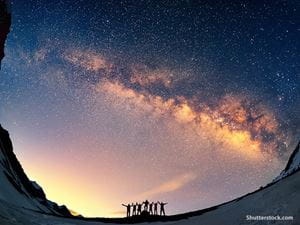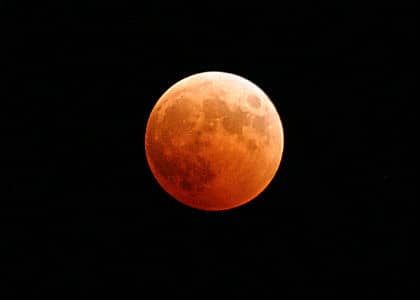
No one is completely certain when horoscopes first came into being. Some scholars credit the ancient Egyptians with creating the first zodiac, but most people believe astrology originated in the ancient Babylonian empire. The astrological charts this powerful Middle Eastern society created enabled them to track and predict the recurrence of celestial events and the recurrence of the seasons.
Because of the accuracy and scientific nature of early astrological predictions, the separate disciplines we now know as astronomy and astrology were one in the same during ancient times. In some ways, the two began to separate when the Babylonians began to apply myth to constellations and identify the stars with some of their gods. For example, Ishtar, the goddess of war and fertility, was identified with the planet Venus, and Mars was aligned with Nergal, the consort of Ereshkigal, the queen of the Netherworld.
Despite the inclusion of mythology, the usage of early astrology was still primarily confined to agricultural purposes such as predicting weather patterns. When these predictions were reasonably accurate, however, the same methodology began to be applied to other areas of human existence. The Babylonians began to use astrology to attempt to predict natural disasters, wars and famines. Over time, astrology became one of the several methods of fortune telling that was used to counsel kings and emperors.
Proof of these early astrological predictions still survives in a few ancient documents. The oldest currently known astrological document dates to between 668 and 626 B.C. This document includes astronomical observations and calculations meant to help early astronomers and astrologers forecast solar and lunar eclipses. It also contains early astrological predictions. An early horoscope birth chart also survives. This document was meant to pertain to a single Babylonian individual and is dated for 410 B.C.
While these early predictions laid the foundation for our modern astrological system, the Babylonians were not the only ones who learned how to chart the stars and planets. The ancient Mayans, Aztecs and Incans from South America developed complex astrological systems that were based on a zodiac of 20 different signs. These signs were inspired by a mix of both animals and natural phenomenon. The jaguar, ape, dog and turtle appeared in these systems as did the rain and the earthquake. Unfortunately, much of these intricate systems were lost when the civilizations themselves died out. That said, what little knowledge remains of these systems has captured the modern imagination. The complex but fascinatingly accurate Mayan calendar has been a staple of doomsday movies for many years, and there were plenty of people who were concerned about a real life Armageddon occurring when the Mayan long-count calendar restarted in 2012.
Though there were numerous ancient zodiac systems and horoscope predictions to go with them, the system most people in the Western World today are familiar with is rooted in both Babylon and Greece. The Greeks were introduced to the ancient Babylonian horoscope during Alexander the Great’s conquest of Asia. Though the calendar and astrological system began to be translated from Babylonian cuneiform to Greek around this time, astrology did not take root in ancient Greece until well after Alexander the Great’s death.
In roughly 280 B.C., a priest of Bel from Babylon named Berossus traveled to the Greek island of Kos. It was here that he taught astrology and Babylonian culture to the local Greeks. The Greeks were proud of their logical ways of thinking and, therefore, were initially skeptical of astrology. By the first century B.C., however, astrology had taken root in Greece to the point that there were two different versions of astrology. One version used horoscope readings to learn about the past, present and future. The other version focused on using astrology to understand and commune with the divine.
The first known depiction of the system of 12 zodiac signs that so many people are familiar with today is found on a bas-relief from a temple of the Egyptian goddess Hathor. This sculpture is often referred to as the “Dendera zodiac” and dates to around 50 B.C. This classical system was then expanded upon and explained in great detail by Ptolemy in his work Tetrabiblos. Ptolemy’s work described the planets, houses and signs of the zodiac and explained the theoretical basis of the western zodiac as being aligned with the equinoxes and solstices rather than the constellations after which the signs were named.
The Greeks spread their version of astrology and the zodiac as their empire continued to expand, and the Roman Empire did much the same. In the late first century B.C. and the early first century A.D., astrology was a common practice. It is believed that the Magi who visited Jesus were Persian astrologers and priests, and the Roman Emperor Augustus had Capricorn, his astrological sign, emblazoned on coins.
Some argue that this period was astrology’s peak. The practice began to decline after the Roman Empire fell, and astrology was further pushed to the fringes of society as the Christian religion increased in both power and popularity. Astrology was also refuted in Persian and Muslim territories in the early twelfth century as various Middle Eastern empires abandoned it in favor of early hard science. Similarly, the Age of Enlightenment sounded the death knell for ancient astrology. Science had overthrown mythology to become king of the skies. Modern astronomy replaced astrology as a system for understanding the heavens, and astrology was more or less entirely discredited.
The twentieth century, however, saw a resurgence in society’s interest in astrology. Dozens of books, magazines and radio programs on astrology began to appear. Newspapers started to carry horoscopes, and the New Age Movement began ascribing real power to the stars once more.
Today, people do not rely upon or trust in astrology in the same way that the ancient Babylonian kings and Roman Emperors did, but basic knowledge of the zodiac is extremely widespread. There are few people today who do not know their star sign, and plenty of people once again believe that Mercury, Venus and the other planets influence the world. Astrology’s history is not finished yet, and based upon its steady comeback, perhaps the stars will regain the influence once ascribed to them once more.

